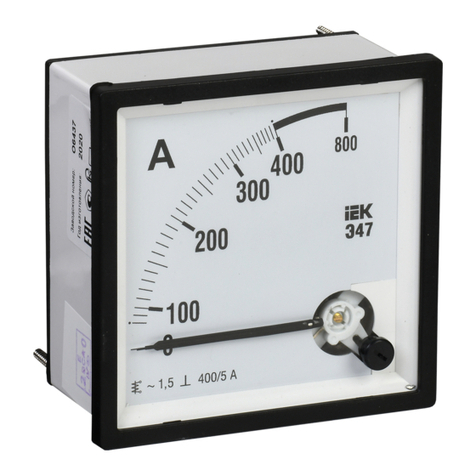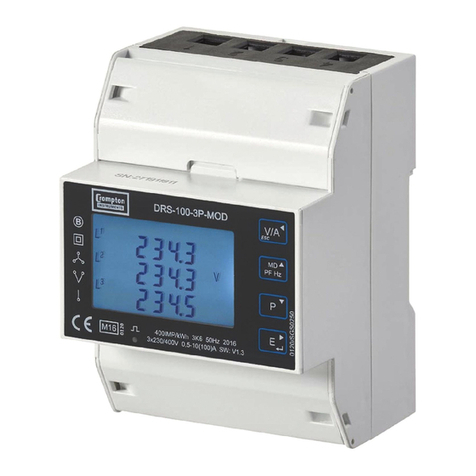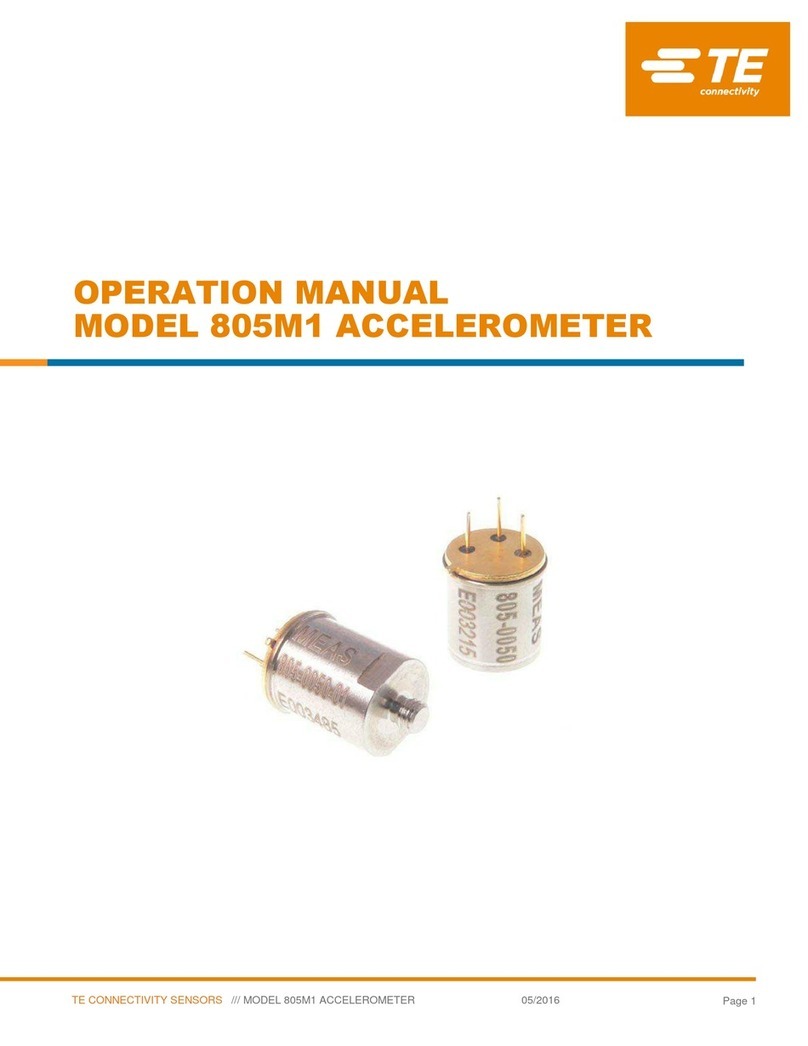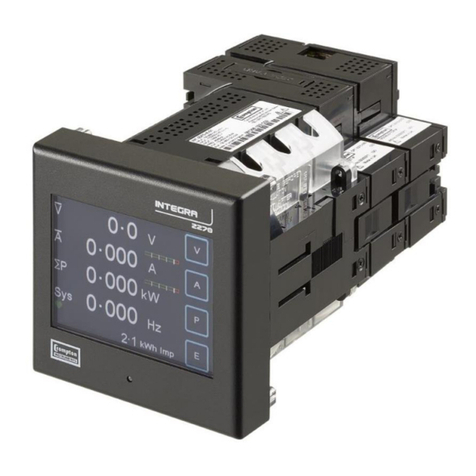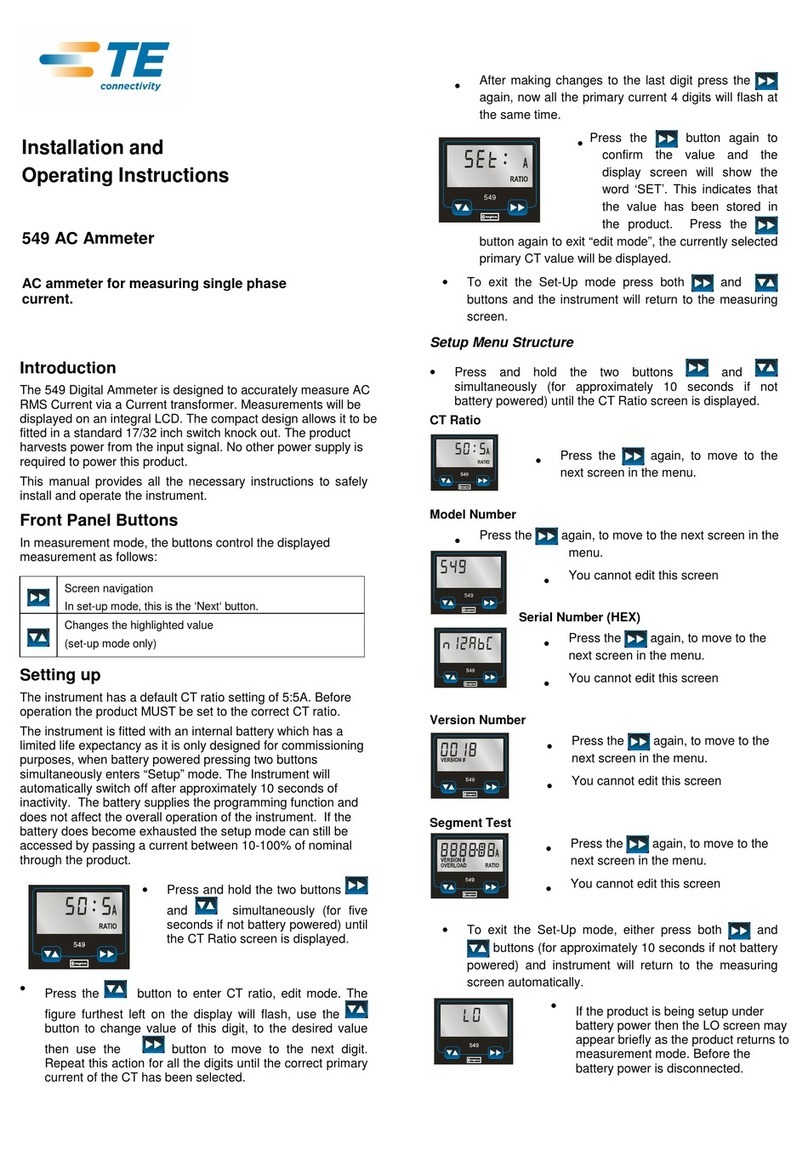
Operating Manual
Operating Manual 832 & 832M1, Rev B www.te.com October 20, 2015
2 of 8
Warranty
TE Connectivity accelerometers are warranted
during a period of one year from date of
shipment to original purchaser to be free from
defects in material and workmanship. The
liability of Seller under this warranty is limited to
replacing or repairing any instrument or
component thereof which is returned by Buyer,
at his expense, during such period and which
has not been subjected to misuse, neglect,
improper installation, repair, alteration, or
accident. Seller shall have the right to final
determination as to the existence and cause of a
defect. In no event shall Seller be liable for
collateral or consequential damages. This
warrant is in lieu of any other warranty,
expressed, implied, or statutory; and no
agreement extending or modifying it will be
binding upon Seller unless in writing and signed
by a duly authorized officer.
Receiving Inspection
Every TE Connectivity accelerometer is carefully
inspected and is in perfect working condition at
the time of shipment. Each accelerometer
should be checked as soon as it is received. If
the unit is damaged in any way, or fails to
operate, a claim should immediately be filed with
the transportation company.
Service Concerns
If a TE Connectivity instrument requires service,
first contact the nearest TE Connectivity
representative. They may be able to solve the
problem without returning the unit to the factory.
If it is determined that factory service is required,
call Customer Service at the regional
headquarters for an RMA number before return.
Returns
All units being returned to the factory require an
RMA (Return Material Authorization) number
before they will be accepted. This number may
be obtained by calling Customer Service at the
regional headquarters with the following
information; model number(s), quantity, serial
number(s), and symptoms of the problem, if
being returned for service. You must include the
original purchase order number if under
warranty.
Recalibration Services
The Vibration Sensors Design Center and its
two manufacturing facilities in China and France
offer factory re-calibration services for
Piezoresistive, Piezoelectric and Integrated
Electronics Piezoelectric (IEPE, ISOTRON, ICP,
etc.) accelerometers. NIST (US), DKD
(Germany), COFRAC (France) traceable
calibration services on sensitivity at 100 Hz (102
or 120 Hz in Europe) and full frequency sweeps
are offered. Contact the regional headquarters
for pricing information.
Inquiries
Address all inquiries on operation or applications
to your nearest Sales Representative, or to the
Vibration Applications Support as follows:
Global Headquarters
1000 Lucas Way
Hampton, VA 23666, USA
Tel: +1 757 766 1500
Vibration Sensors Design Center
32 Journey, Suite 150
Aliso Viejo, CA 92656, USA
Tel: +1 949 716 7324
European Headquarters
105 av. du Général Eisenhower
BP 1036, 31023 Toulouse Cedex, France
Tel: +33 (0) 561 194 543
Asian Headquarters
Measurement Specialties (China), Ltd.
F1.6-4D, Tian An Development Compound
Shenzhen, China 518057
Tel: +86 755 8330 1004


